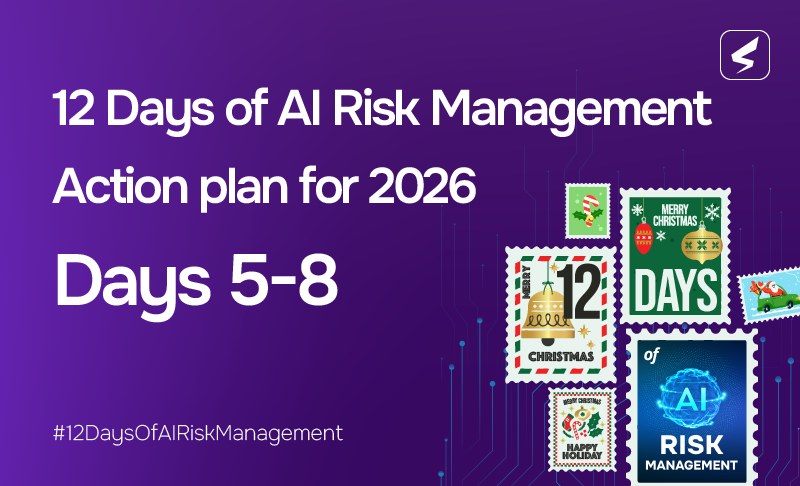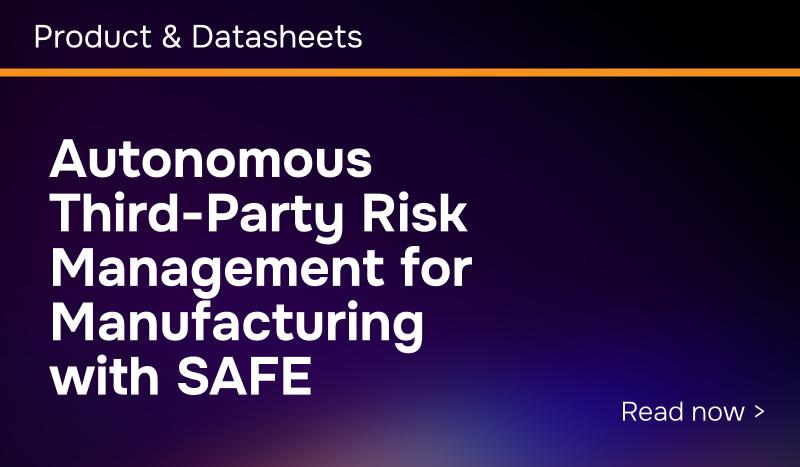The C-suite is driving GenAI adoption at breakneck speed, recognizing its role in ensuring the business stays competitive. But they’re side-stepping a critical component that could threaten the entire GenAI strategy: risk management.
This mindset stems from the misconception that the business can address security concerns once the initial AI implementation is complete. However, this approach is misguided and potentially catastrophic. Organizations that prioritize security from the outset will be able to accelerate AI adoption – and those who neglect it stand to face significant challenges, including the risk of data breaches, financial losses, and reputational damage.
The solution is straightforward – keep security at the core, and your AI adoption will be responsible and swift.
The Evolving GenAI Adoption Landscape
Generative AI is here to stay, and businesses are lapping it up. “The state of AI in 2023: Generative AI’s breakout year” report states that 28% of companies say GenAI is already on their boards’ agendas, and 40% of organizations will increase their investment in AI. As AI adoption surges, so do the associated risks. We’ve identified five types of AI risk organizations encounter as they delve deeper into AI applications. These involve risks from:
- Shadow AI: The inadvertent use of Generative AI (GenAI) without proper oversight.
- Foundational LLMs: Organizations building large language models (LLMs) for specific business needs.
- Hosting on LLMs: Organizations hosting LLMs for development.
- Managed LLMs: Organizations utilizing third-party hosted LLMs.
- Active cyber attacks: Adversaries actively exploit LLMs to launch cyberattacks.
From our conversations with CISO, we’ve observed that cyber risk teams are informed about the company-wide GenAI adoption strategies at the tail-end of the project when, in fact, they need to be in lockstep with business leaders from the get-go. The quicker business leaders realize this, the better it is for enterprise GenAI adoption.
How CISOs Can Be an Ally in the AI Adoption Movement
The fastest cars have the most efficient brakes… Similarly, cybersecurity isn’t a blocker but a catalyst for secure and accelerated AI adoption. Changing the perception of cybersecurity as a “brake” begins with moving beyond rigid, one-size-fits-all solutions and embracing a dynamic approach that aligns with the ever-evolving business landscape.
A critical component in assuming dynamic and continuous risk management involves the quantification risk, GenAI or otherwise. Unfortunately, current methods implemented by CISOs to measure the financial impact of risk are not fit for purpose – they’re siloed, point-in-time, and reliant on guesswork.
This is where the SAFE x FAIR™-AIR approach is a game-changer. The FAIR™ Model is the international gold standard in cyber risk quantification, and its FAIR™-AIR (Artificial Intelligence Risk) approach outlines how to manage GenAI risk in a scalable and efficient manner. SAFE is the technical advisor to the FAIR Institute, and the combination of the FAIR-AIR Model and SAFE’s AI-driven Cyber Risk Quantification and Management (CRQM) solution dramatically accelerates the value delivery to organizations.
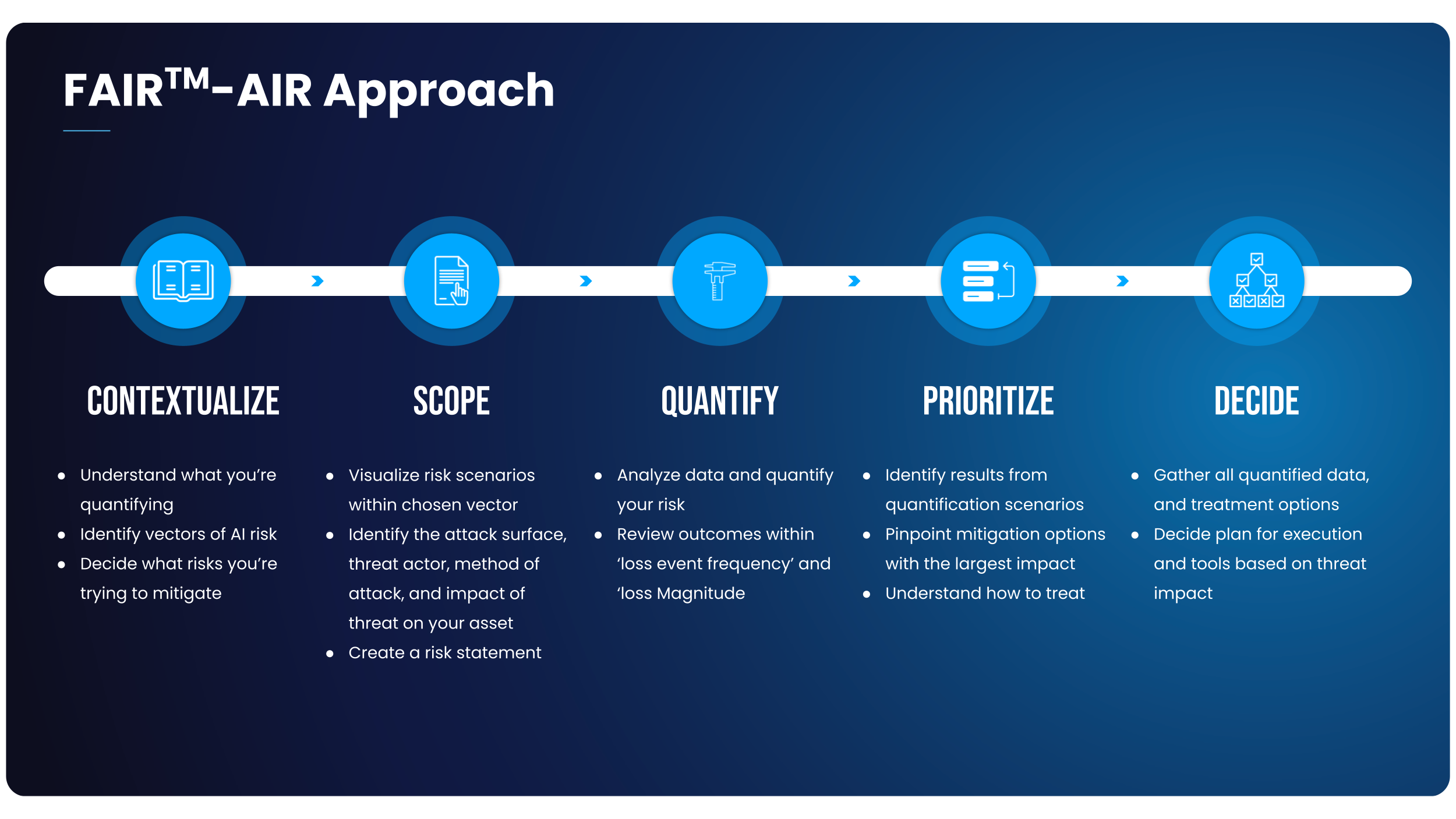
Remember, AI risk management needs to continue in addition to a business’s cybersecurity risk management strategy. The five steps to becoming an ally in AI adoption through managing GenAI risk are:
- Contextualizing GenAI risk
- Scoping GenAI risk scenarios
- Quantifying impact
- Prioritizing treatment
- Risk-driven decision-making
The SAFE x FAIR Automation
The SAFE platform offers a comprehensive GenAI Risk Posture Management Platform to equip data-driven decisions around AI risk management. SAFE’s CRQM solution automates GenAI risk identification, quantification, prioritization, and management with its AI-powered approach and prompt professional and risk advisory services. SAFE helps organizations mitigate GenAI risks by implementing the FAIR™-AIR approach.
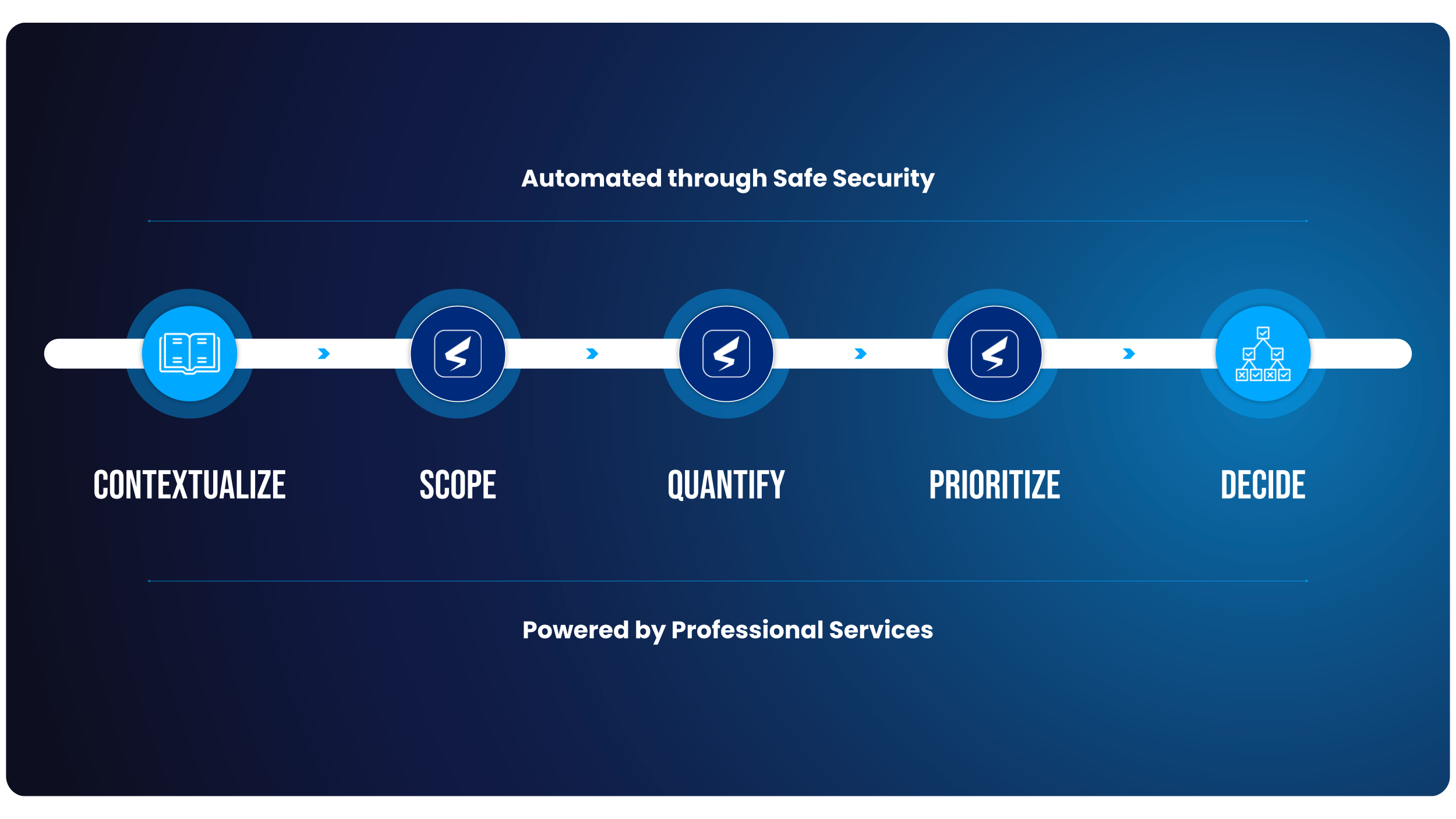
Step 1:
Contextualizing GenAI RisksReal-time AI risk contextualization is non-negotiable when it comes to managing AI risk. The SAFE Platform automatically aggregates enterprise-wide signals by collating diverse API signals from cybersecurity products, tools, and services already deployed within your estate. Using SAFE and the FAIR™ Model’s defensibility, CISOs can instantly identify top risks across the current and expanded attack surface – including technologies, assets, workforce, SaaS vendors, and business units.
Step 2:
Scoping GenAI RiskOnce you’ve contextualized risk from the five vectors, your team needs to focus on understanding which risk scenarios apply to your business objectives. SAFE and the FAIR Institute have compiled a list of top risk scenarios into a growing GenAI Risk Library. You can gain unprecedented insight into cyber risk unique to your industry using our comprehensive solution, which offers out-of-the-box AI risk scenarios with a level of detail unmatched in the industry.
Step 3:
Quantifying GenAI Risk ScenariosCISOs are equipped to devise a dollar-driven cyber risk strategy with real-time AI risk quantification insights. The SAFE x FAIR-AIR approach leverages predictive data analytics and AI-driven Monte Carlo simulations to generate two critical values:
- The Loss Magnitude: Potential financial impact of the risk
- The Breach Likelihood: Probability of the risk leading to a successful cyberattack
By demonstrating AI risk in dollars and cents, SAFE seamlessly enables CISOs to position AI cyber risk management as an integral aspect of business risk management.
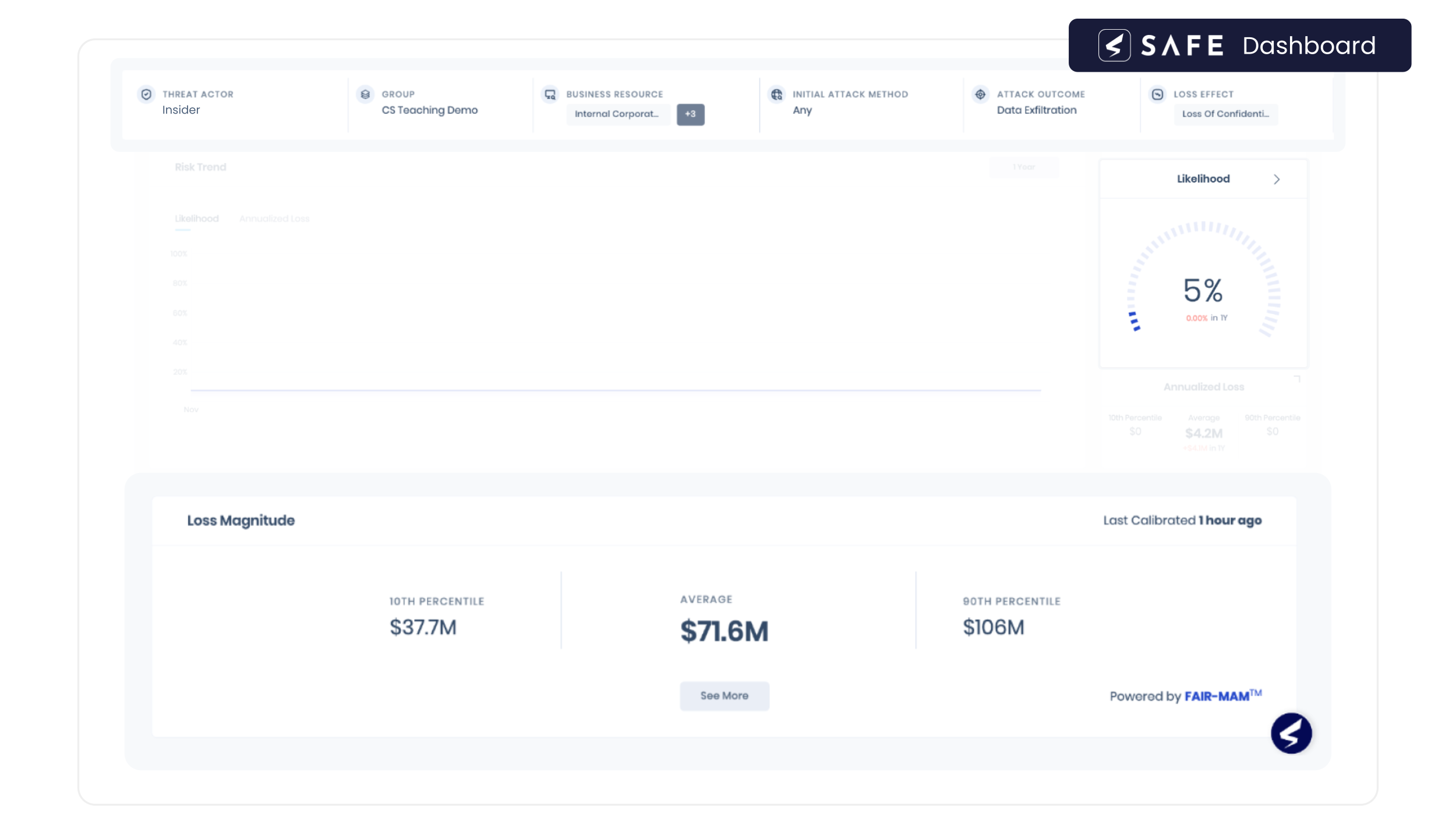
Step 4: Prioritizing GenAI Risk Management
For various GenAI risk scenarios, SAFE has built control libraries based on the FAIR™-CAM model. SAFE also maps every existing risk in your AI landscape to the MITRE ATLAS and MITRE ATT&CK Frameworks to determine your controls’ efficacy for maximum impact. SAFE’s intelligent risk prioritization enables the CISO to make data-driven decisions to reduce AI risks. SAFE provides prioritized actionable recommendations with ROI-driven insights.CISOs are equipped to prioritize the risk that has the greatest financial impact, request targeted cybersecurity investments, adjust cyber insurance premiums, and more – all of which directly influence the agility of cybersecurity teams to accelerate GenAI adoption.
Step 5: Data-Driven Decision-Making
In the final step, you leverage the data points to determine what scenarios you should prioritize. SAFE’s easy and simplified persona-based dashboards ensure every technical and non-technical stakeholder knows the financial impact of cybersecurity decisions, investments, and strategies.Every stakeholder is brought into the foray of GenAI-related cyber risk management – which encourages efficient communication, informed decision-making, and shared accountability.
Winning the AI Adoption Race is a Marathon, Not a Sprint
The SAFE platform offers a comprehensive GenAI Risk Posture Management Platform to equip data-driven decisions around AI risk management. The result? Organizations can confidently, securely, and rapidly accelerate AI adoption without compromising cybersecurity requirements. With SAFE’s unmatched risk quantification and management capabilities and tenured risk advisory services, CISOs can successfully transition to become an ally in the AI movement.
Schedule a 1:1 meeting with a cyber risk expert to discover how SAFE can empower your business to accelerate AI adoption.
Continue your GenAI risk management discovery:
- Uncover the CISO’s Guide to Managing GenaI Risk Read now
- Learn from FAIR Institute experts on how a CISO can become an ally in the AI adoption strategy Watch here
- Learn more on our dedicated AI risk management space: Visit genAIrisk.ai


